Accessibility is hospitality
June 18, 2020
1 Comments
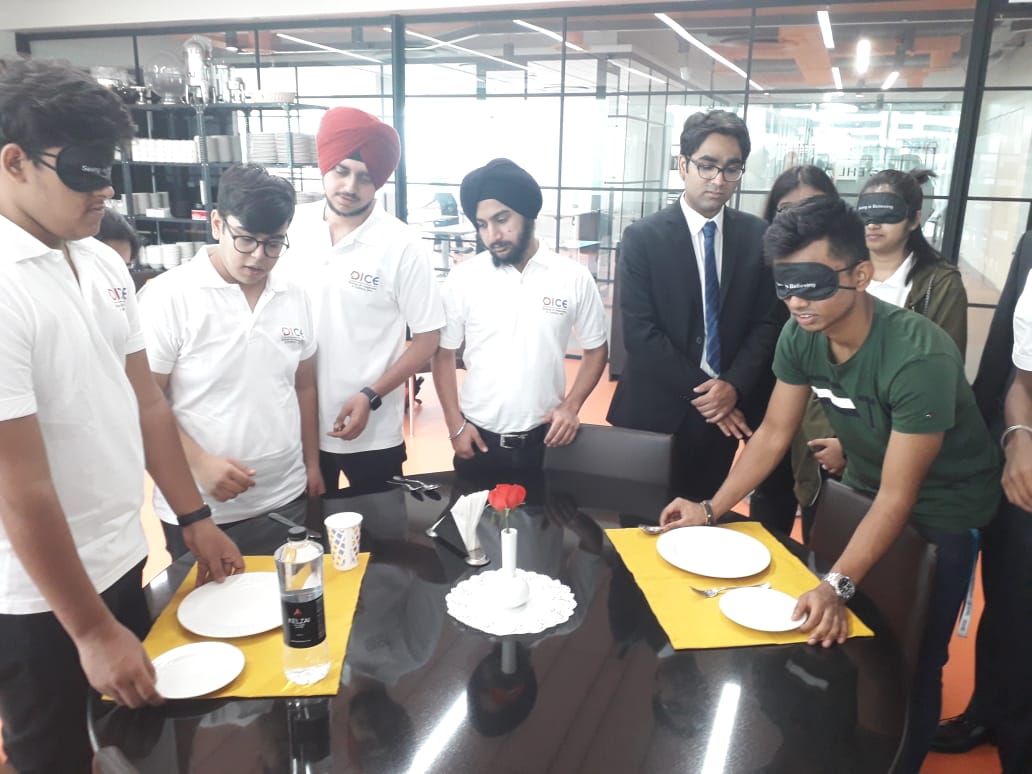
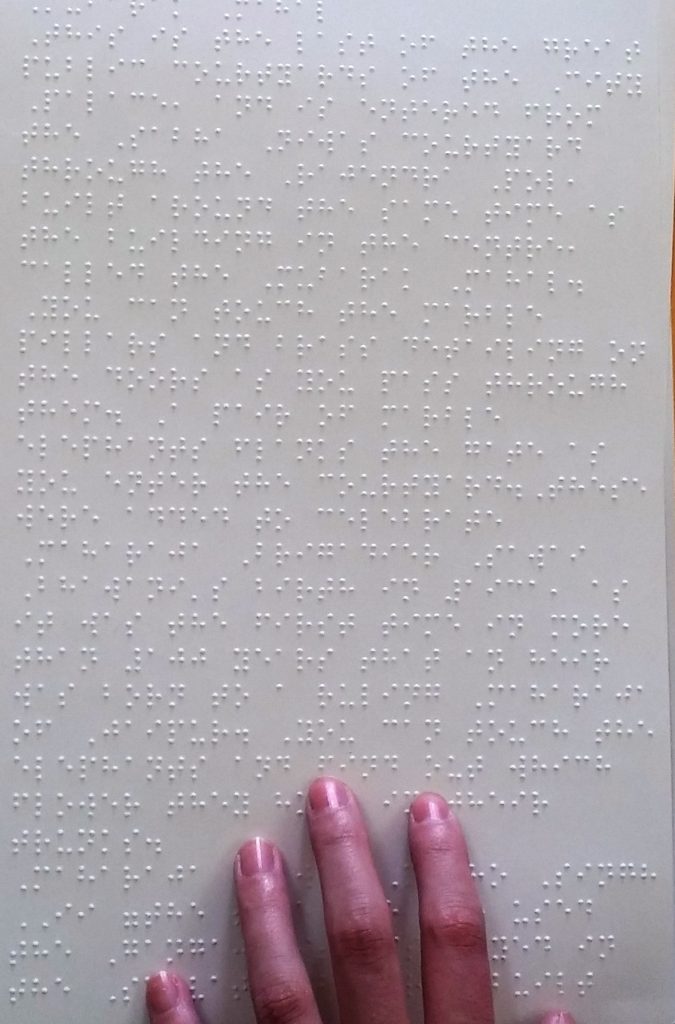
Product designer Amit Sheth says that when planning an alumni get-together for his BITS-Pilani or NID batchmates he often face challenges when one or the other guest has some special needs. “One of my batchmates is a spinal injury quadriplegic. He is always having a problem finding a restaurant to visit that is wheel-chair accessible. While the importance of universal design has been recognised by governments, business and industry of many countries, and is even considered by some nations as being part of their inclusive society philosophies and as a right for citizens to have a life of dignity, this approach has generally been neglected in India which needs it more than many other countries”.
He elaborates, “with a population approaching a billion, we can imagine how many Indians suffer from permanent mental, visual, hearing, locomoter, orthopaedic, various physical impediments, how many senior citizens India has, how many children are there, who need better accessibility to built environments and safety in public areas. When we think about the fact that accessibility to buildings is an important factor for pregnant women, arthritis patients, those suffering from chronic or temporary ailments, people with a fracture or muscle injury, the issue becomes mind-blowing in proportions’’.
It is not only those with mobility challenges that find barriers in visiting a restaurant. Going to a restaurant for a meal also poses difficulties for those with special dietary needs, psychological illness, chronic disorders, dysfunction or visual, hearing or mobility impairments , and other challenges.
Physical Challenges
The differently-abled whose condition limits their movements, senses or activities are often left out because they cannot access a restaurant. The challenge is not an easy one,Amit Sheth explains. “As a way of offering access to the disabled, we come up with separate and stigmatising solutions, instead of a more dignified approach of having just a gradual ramp that can be used by the wheel-chair bound person as well as being safe and comfortable for everyone not just people with disabilities. Not enough work has been done on how restaurants can be more accessible’’.
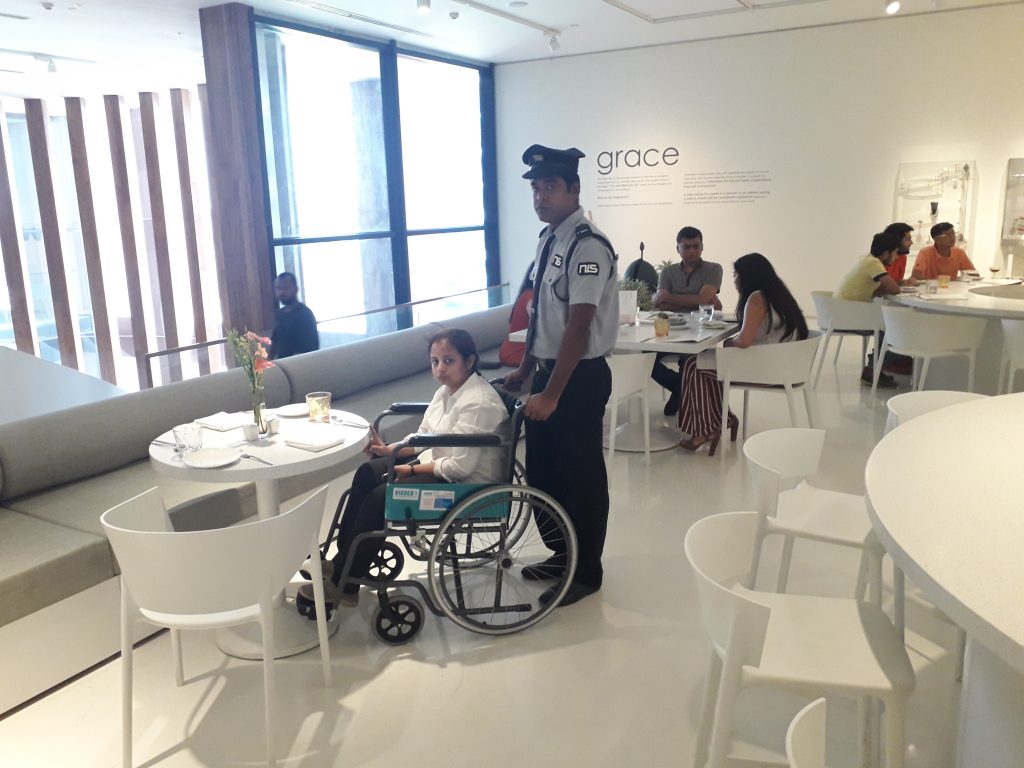

Dietary requirements
If you look at the number of people who live with medically-imposed dietary restrictions, food intolerance or allergy, it is easy to understand how important it is for your restaurant team to be sensitive to special dietary requirements of those suffering from diabetes, hypertension, chronic renal disorder, gout, coeliac disease and other disorders that cannot be taken lightly. Certain foods can cause a spike in medical conditions that can have serious consequences. 8 to 9 per cent of the Indian population suffers from diabetes alone.
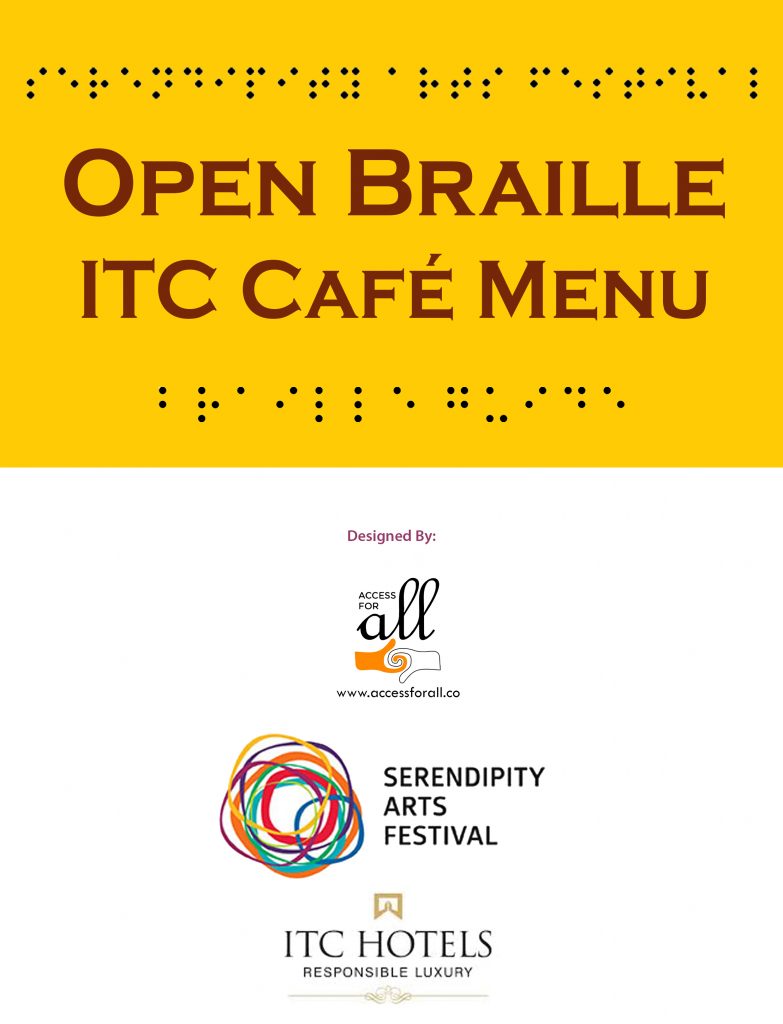
Whenever this subject comes up, restaurant owners say the onus is on the diner to inform the waiter or management about their special dietary requirements. They forget the number of hidden ingredients that go into restaurant food – the sauces, the ready gravies, the breads, the pastas, the ready masalas and mixes that are so widely used in the making of dishes or platters. For instance in the case of a patron who is lactose intolerant, there may be many produces that have milk proteins that you do not know about. Coeliac disease is a condition that cannot be taken lightly and anyone suffering from this disorder needs a gluten-free diet – he or she may avoid breads but often products you serve may be coated with bread crumbs, a burger patty or sausage may contain wheat. Similarly, soy may be present in many dishes. Even if you do not add salt to a dish, the sauces, masalas or mixes you use may be high in salt and the consumption of a dish with these additions can have serious consequences for a patient with hypertension or chronic kidney disorder.
Train your staff to understand what exactly is to be avoided in the patron’s food and then to communicate it to the highest level of the kitchen team that can check labels for allergens or specific ingredients.
Mental or Psychological challenges
Will your staff have patience with a patron who does not look them in the eye? A patron whose attention wanders when talking? A dyslexic diner who takes time to comprehend certain instructions?
There are times when parents avoid going out to eat with an autistic child.
Sensitizing staff to accommodate restaurant guests with special needs like autism, Asperger syndrome, cerebral palsy, Down syndrome, learning disabilities or dyspraxia is as important as making the restaurant accessible for those with physical challenges.
Religious, ethical or lifestyle choices
In India we all know the impact religion can have on dietary choices. Islam prohibits pork and other meats must be `Halal’, Judaism requires meat and fish to be `kosher’, and some types of meat, fish and seafood are avoided. Sikhs require meat to be slaughtered in a special way called `jatka’. Hindus do not eat beef and some are vegetarian. Jains will not eat food that contains onion, garlic or root vegetables.In addition to these there are many fasts that people adhere to.
Besides religious concerns, many ethical and lifestyle choices also exist – veganism for example.
Many patrons avoid restaurants where they not sure of getting food according to their dietary requirements.
“Look, we take pride in recognising so many languages and dialects, of having so many religious beliefs existing in one country. In addition to this, there are many women who have grown up to learn not to talk to strange men, you know, that sort of thing. Therefore, the need for signages that can be universally applicable to all regardless of the languages they can read, well-designed and located for a visitor who does not have to ask direction’’, Amit Sheth explains.
Siddhant Shah of Access For ALL who has been auditing hospitality properties and restaurants across the country, says “Our aim is to make sure that they can achieve maximum inclusion and allow for a diverse group of guests in their properties and restaurants. We aim to provide access for all as most of the restaurants only consider ‘physical’ disabilities and not intellectual’’.
There are exceptions. I Support Foundation by Juhi and Bobby Ramani are working to make restaurateurs in Bangalore and Lucknow aware about people with special needs so they can ensure hassle-free experience for differently abled people and their families at restaurants and cafes.
Siddhant Shah, founder of Access For ALL, talks about what restaurants can do to make themselves as inclusive and accessible as possible.
Training
If a person with disability or older individual needs assistance, the restaurant staff must be trained to take the appropriate steps.. The training focus on various elements like for the deaf or hard of hearing may need to communicate in writing or use other means of communication. So they need to be trained to provide for those necessities. With proper training, the team feels confident that they can assist customers appropriately and professionally.
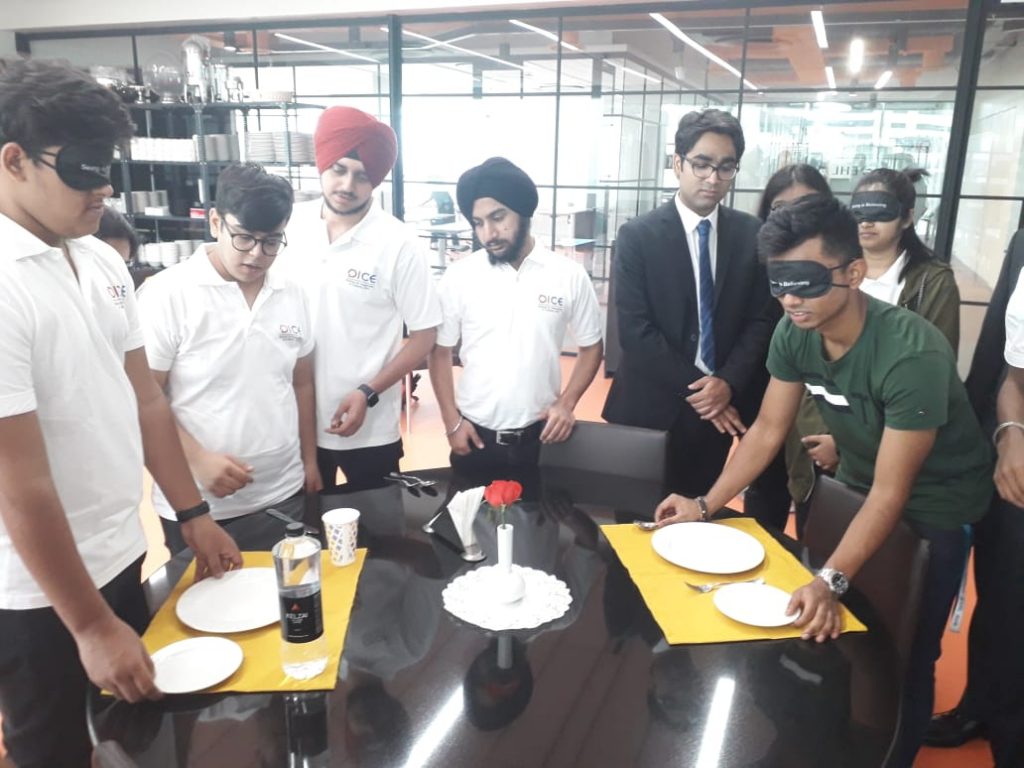
We have been conducting Blind-fold dinners and even training the staff using blind-fold and simulation training even at hospitality colleges like DICE Ecole Lausanne Hotellerie.
Signage and details to help those with challenges.
Braille Signage
Braille Menu
Sign Language Guide
Entryways and doors for accessibility
a. Revolving doors, revolving gates, and turnstiles SHOULD NOT be part of an accessible restaurant.
- Easy operation is better like sliding doors.
- Entrance doors should be 1000mm door set. There should be a minimum clear opening width of 840mm.
- Ideally the door opening should be 900mm wide.
- There should be a clear space of a minimum of 300mm between the opening edge of the door and nearest obstruction to the side, e.g. a wall.
Floor Layout
Layout and design are major factors in your restaurant’s success. You’ll need to take into account the size and layout of the dining room, kitchen space, storage space and office. As a person with disability may not always be your guest, it could be the owner, manager or chef, so all the facilities should be accessible. There should be no protruding surfaces. The floor area should be anti-skid and allow easy movement of the wheelchair.
Wheel chair friendly interiors..
The seating is a designated area or seats where individuals along with the guests with disabilities can sit to help accommodate their needs much better than traditional ones which is fixed. This type of seating is flexible and is very common for specially-able individuals and those with wheelchairs.
Some others points are:
– Provision for a 5-foot circle or T-shaped space available for a person using a wheelchair to reverse direction.
– Hindrances or obstacles located in any of the circulation paths must be cane-detectable for the persons with visual impairment.
– Movable chairs can be used so that the chair can be moved and the wheelchair can take its place.
Lighting and Sound
For the hearing Impaired, loud and multiple sounds can be a concern. Use acoustic or fabric-wrapped panels to cut down on noise in the dining room. Acoustic panels are another option for cutting down on noise in a restaurant making it comfortable for those with hearing aids. These panels can be added to almost any wall space to absorb noise.
Lighting needs to be catered to those with low vision and colour blindness. Glare from reflective surfaces can be a hindrance for people whose eyes are not capable of modulating light, due to retinal disease. Install light switches in accessible locations (in toilets) and in case of hotels, install switch plates that are lighted or contrast with wall color.
Strong lighting and sound can also disturb those with mental and psychological conditions. Accommodate requests from such diners.
Accessible washrooms
All toilets can be accessible if they are designed with logic. An accessible toilet is designed mainly to accommodate people with physical disabilities. Additional measures to add accessibility are providing more space and grab bars to ease transfer to and from the toilet seat, and including enough room for a caregiver if necessary. There are specifications that we provide based on the access audit.
Crockery and cutlery
It is a good idea to keep alternatives to the usual tableware you keep on the tables. For instance, patients of specific conditions may need light-weight cutlery or special spoosn.
Points to consider when planning for a universally accessible restaurant
- Buy premises in a building or area that is friendly for those who are differently abled. .
- Hire professionals for solutions and access audits.
- At least 10% staff should be persons with disabilities.
Promotion
Show that you are inclusive and accessible on your social media, signage and advertisements. It will help those with special needs to find you, it is win: win as they get to know about a suitable restaurant and you get the business.
Anil Mulchandani is an author, food critic and freelance writer. He has written extensively on development issues in more than 50 publications.
Amit Sheth of MIND’S EYE is an electronics engineer from BITS (Pilani) with a post graduate diploma in Industrial Design from NID (Ahmedabad). Amit is also a Member of the Indian Society of Lighting Engineers (MISLE). He has audited many public spaces for universal design and accessibility.
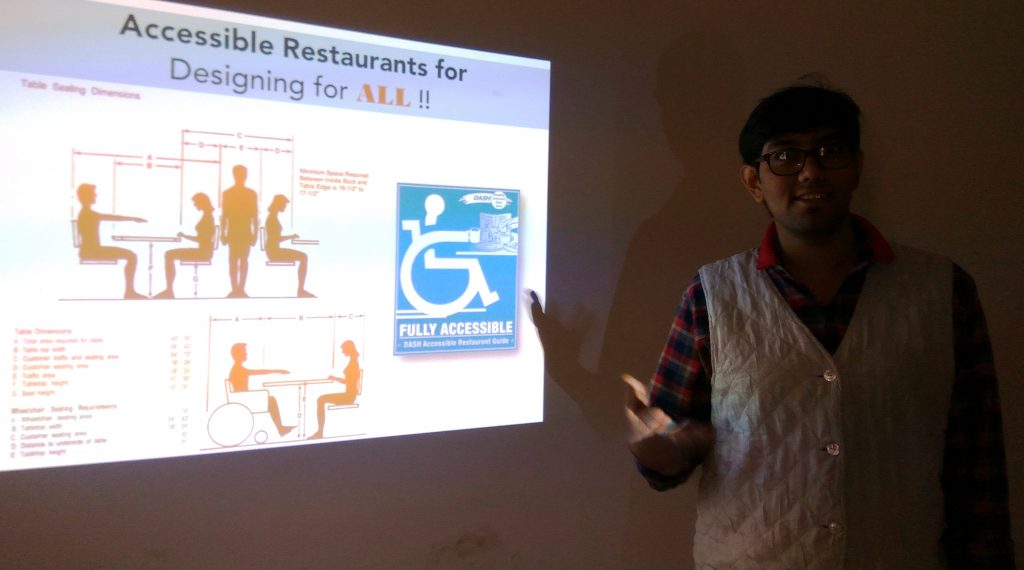
Sidhant Shah of Access For ALL is a TEDx Speaker and UNESCO consultant on accessibility. He specializes in bridging the gap between Cultural Heritage, Arts and Disability. He consults hotels, palaces, museums, art-events, art galleries and cultural sites to make them more accessible through accessible designs, educational and tactile art experiences for visually impaired and blind audiences, while focusing on children as well as groups with disabilities and providing the infrastructure (braille menus, books, tactile art works objects). Some of the properties he has worked with are City Palace at Jaipur, Mehrangarh Fort in Jodhpur, GRACE at Kolkata Centre for Creativity and City Palace of Udaipur. His clients in the hospitality industry include Clarks Amer Hotel in Jaipur, Baradari City Palace Jaipur, Abad Hotels in Kerala, among others His clientele spans India, China, Malaysia and Pakistan.



When we started tandoorworkZ, we had put up a wheel chair accessable ramp at the entrance. The building association people just ganged up and made us remove it because it was spoiling the design uniformity of the frontage. No amount of explaining about the progressive idea of disability assistance worked on their Reactionary minds.